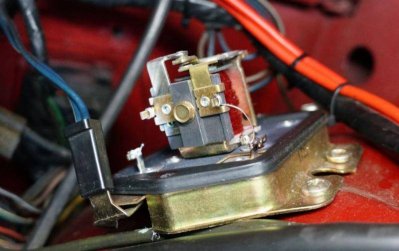Tooltime76
New Member
Hello,
I have a Plymouth Fury form 68 and on the voltage regulator for the alternator i saw that a wire burned (see in picture on the left).
Does one know if this is just a regular wire or a resistance wire? If it is a resistance wire what resistance is usually used there?
I tried to measure the leftover (a few inch) with a ohmmeter, but the existing wire is to short to really get a precise value.

Thank you in advance.
Best Regards
Stefan

I have a Plymouth Fury form 68 and on the voltage regulator for the alternator i saw that a wire burned (see in picture on the left).
Does one know if this is just a regular wire or a resistance wire? If it is a resistance wire what resistance is usually used there?
I tried to measure the leftover (a few inch) with a ohmmeter, but the existing wire is to short to really get a precise value.

Thank you in advance.
Best Regards
Stefan




















